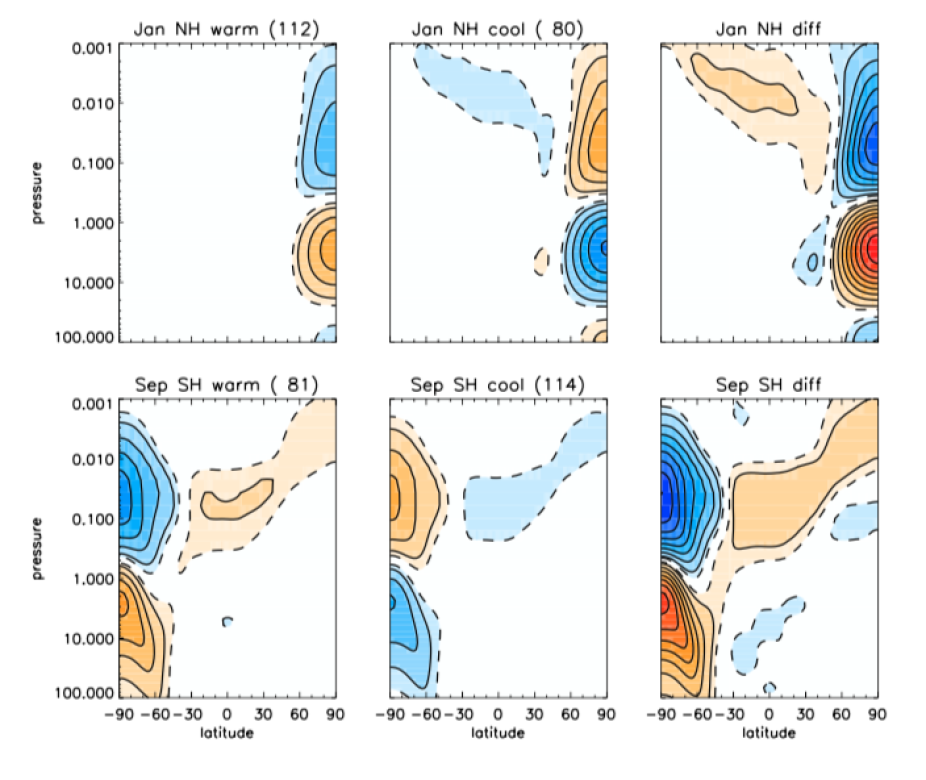Publication Name: Journal of Atmospheric Sciences; First HAO Author's Name: Nick Pedatella
Simulations with the Community Earth System Model 2 using the Whole Atmosphere Community Climate Model configuration, known as CESM2(WACCM6), show evidence of dynamical coupling from the high latitudes of the winter middle atmosphere to the tropics and the middle and high latitudes of the summer hemisphere.

Differences in the monthly mean temperature from the long-term average over three WACCM realizations. The months are sorted by the perturbation temperature in the high latitude winter stratosphere, specifically the region poleward of 60° and between 10 and 1 hPa (warmer than average in the left column; cooler in the middle column). The right column gives the differences of the two panels to the left. The top row is for NH winter in January and the bottom row is for SH winter in September. The contour interval is 2 K; the zero contour is not shown; and contours for 1 K and -1 K are shown as dashed lines. The numbers in parentheses show the number of months contributing to the average.
Analysis of monthly and daily output covering 195 simulation years indicates that the response in the summer middle and high latitudes has a weak overall magnitude of a few Kelvin or less in temperature but has a repeatable pattern whose structure and phase agree with observational studies. Lag correlation indicates that perturbations in wave activity in the winter stratosphere, as quantified by EP flux divergence, are accompanied by perturbations in the transformed Eulerian mean meridional wind extending into the summer hemisphere. There is not an appreciable correlation with momentum forcing in the summer hemisphere by either resolved waves or parameterized gravity waves. The rapid circulation response and the lack of a wave response in the summer hemisphere suggest that the interhemispheric coupling that is simulated in WACCM6 in both the stratosphere and mesosphere owes its existence to a circulation that develops to restore balance to the zonally averaged state of the atmosphere. This is an alternative explanation for the coupling from the winter stratosphere to the summer mesosphere; previous studies have assumed a necessary role for wave activity in the summer hemisphere.